
Close

Lasciati ispirare dal territorio e dalle splendide Marine di Nardò, scopri cosa vedere e visitare durante il tuo soggiorno nel Salento e scegli una Dimora storica oppure una casa al mare per le tue Vacanze in Puglia.
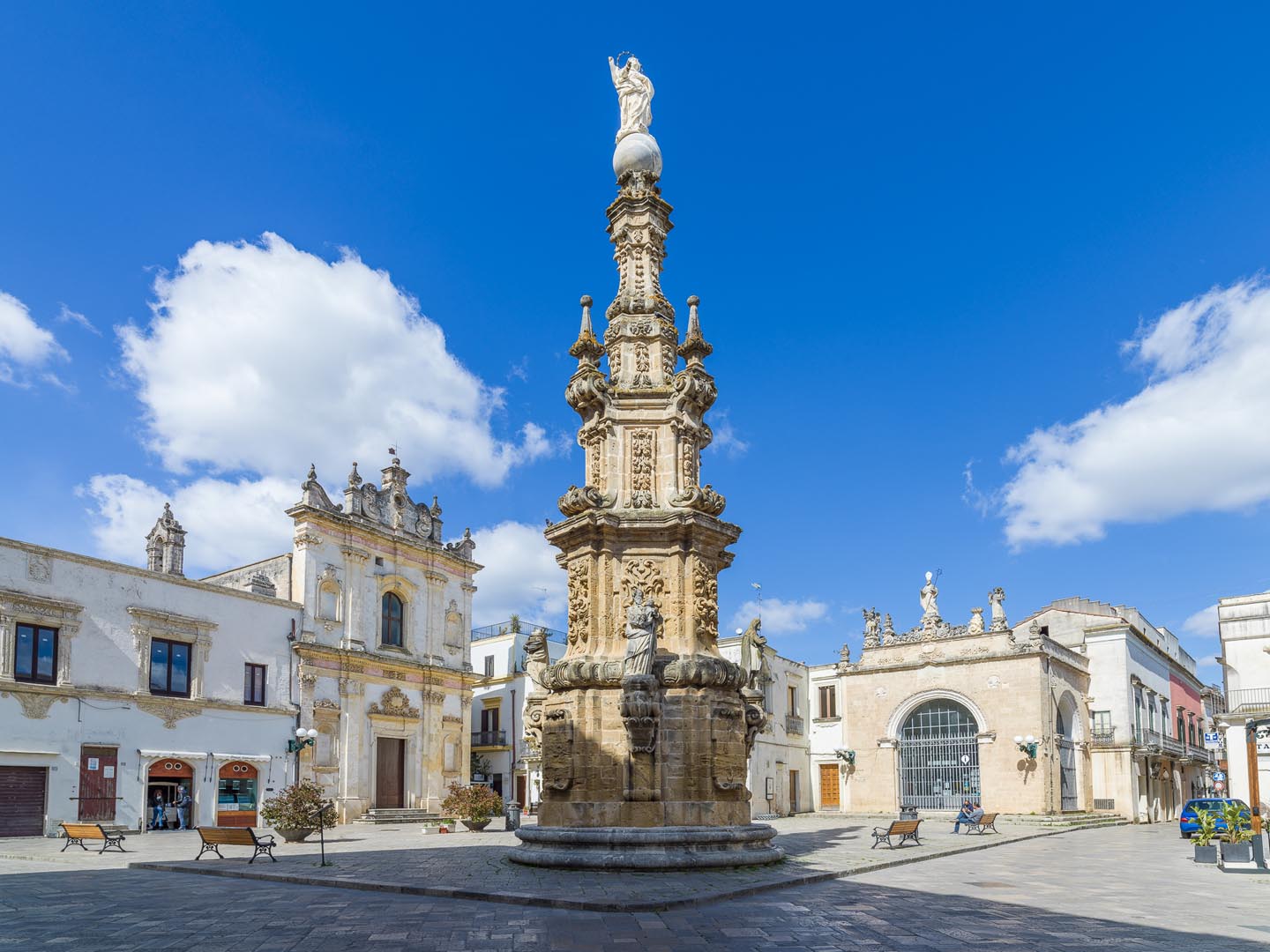
It is a land in continuous and abrupt transformation that has seen its economic configuration profoundly change in recent decades: from an agricultural region centered on the cultivation of olive trees and vines, to a tourism region that has services as its engine of development.
The growth recorded in recent decades by the tourism sector in Nardò is a first confirmation of the exceptional endowment of the area's cultural, naturalistic, enogastronomic resources, but also a moment to reflect on the development model being pursued. Beach tourism represents the first type of offer in the area, but not the only one.
In fact, Nardò, lying in a large plain that stretches along the Ionian coast for about 22km, is by extension and population the largest municipality, after the city of Lecce, in the province. From Torre del Fiume to Punta Prosciutto, the territory is varied and diverse: from the countryside dotted with farms dating back even to the 15th century, to the shaggy cliffs of Santa Caterina and Santa Maria al Bagno, from the Mediterranean scrubland of the Porto Selvaggio Natural Park to the sandy shores of Torre S. Isidoro, from the picturesque Baroque center of Nardò to the prehistoric caves of the coast and the eleven 16th-century coastal towers. Such richness constitutes, undoubtedly, a powerful attraction for that segment of the tourist market attentive to an integrated offer, making Nardò unique and inimitable.
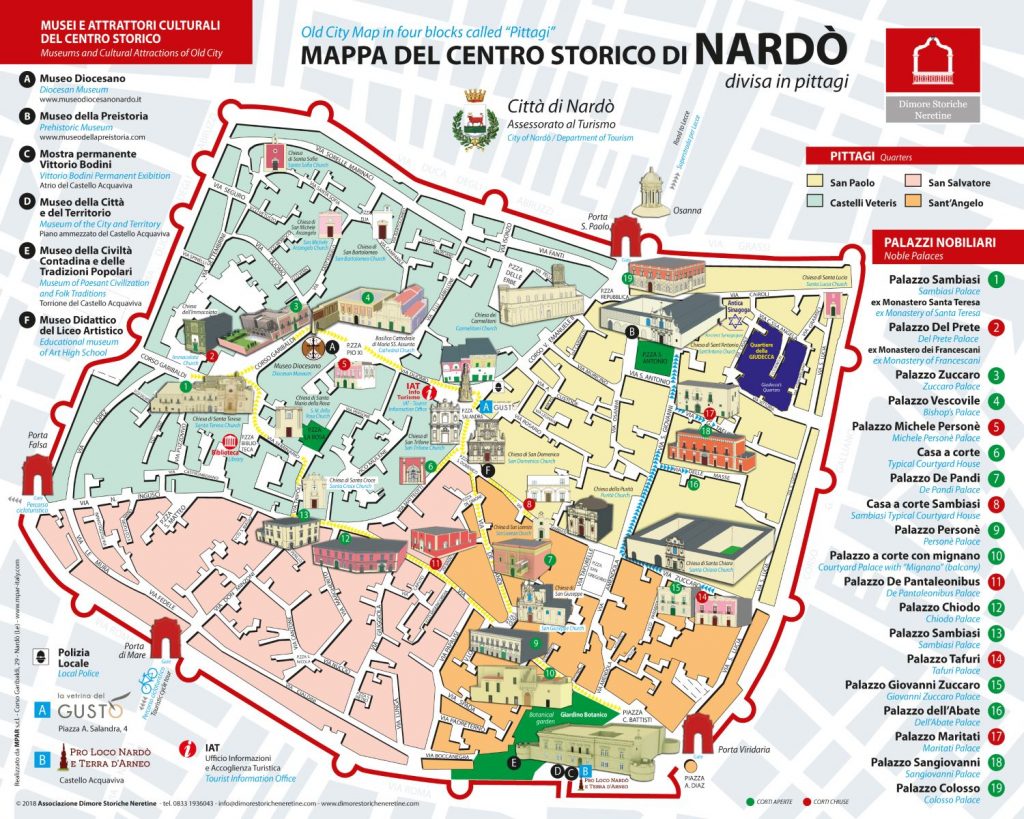
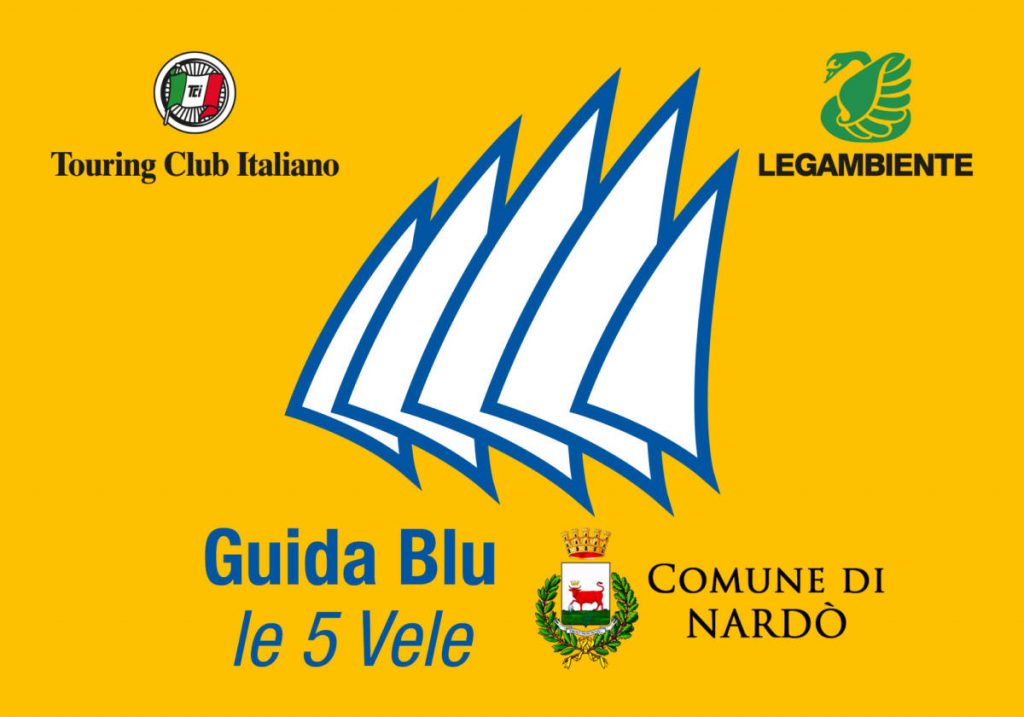
Once again this year, the marinas of the Municipality of Nardò received these prestigious awards.
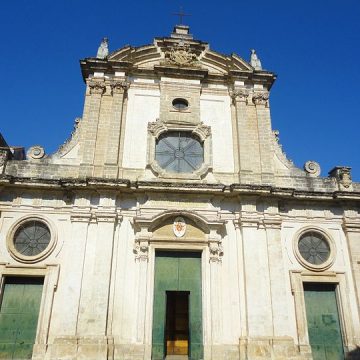
The cathedral of Santa Maria Assunta stands on the site where the ancient Basilian church of Sancta Maria de Nerito was founded by some Eastern monks who escaped iconoclastic persecution in the 7th century. With the Norman conquest of the city in 1055, the Basilian monks were slowly replaced by the Benedictines, to whom the monastery and church were entrusted.
Of note is the 13th-century wooden Crucifix, known as the Black Christ because of the distinctive dark coloring of the cedar wood. A number of altars and the Cappellone di San Gregorio Armeno, by Placido Buffelli in 1680, date from the Baroque period. It was elevated to a minor basilica in 1980
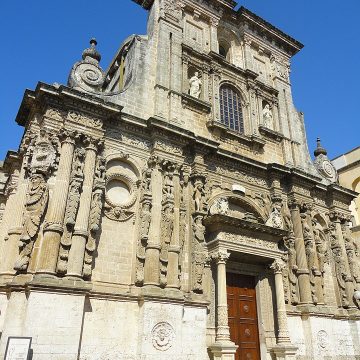
The cathedral of Santa Maria Assunta stands on the site where the ancient Basilian church of Sancta Maria de Nerito was founded by some Eastern monks who escaped iconoclastic persecution in the 7th century. With the Norman conquest of the city in 1055, the Basilian monks were slowly replaced by the Benedictines, to whom the monastery and church were entrusted.
Of note is the 13th-century wooden Crucifix, known as the Black Christ because of the distinctive dark coloring of the cedar wood. A number of altars and the Cappellone di San Gregorio Armeno, by Placido Buffelli in 1680, date from the Baroque period. It was elevated to a minor basilica in 1980
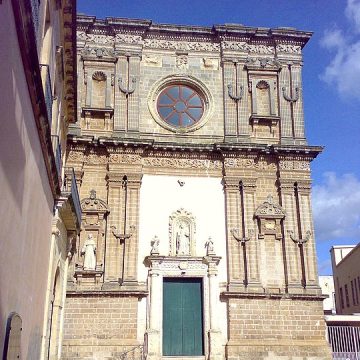
The Church of the Immaculate Conception was built in 1580 on the remains of a medieval building. Originally dedicated to St. Francis of Assisi, from 1830 it was consecrated to the Immaculate Conception and entrusted to the confraternity of the same name. It has an elegant carparo facade divided into two orders by a projecting cornice and characterized by pairs of pilasters with festoons framing gabled niches. The entrance portal, surmounted by a niche with a Lecce stone statue of the Immaculate Conception, is placed in axis with the rose window of the upper order. The interior, with a single nave ending in the presbytery, houses three side altars in Baroque style. The adjoining convent of the Conventuals, purchased by private individuals after its suppression in 1809, is used as a civil residence
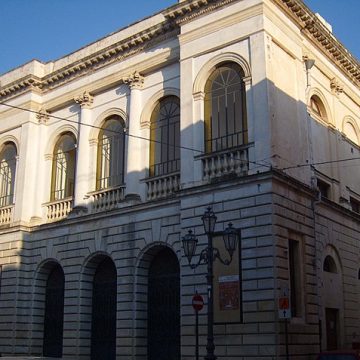
The Nardò Municipal Theater was built in the late 19th century to a design by engineer Quintino Tarantino. It was inaugurated in 1909 with the staging of Arrigo Boito's opera Mefistofele. Although the functionality of the structure was not constant, the activity carried out was intense and it was also used as a music and dance hall since, thanks to the system of pulleys designed by Tarantino, the stalls were raised to the height of the stage. In 2006, work to adapt it to fire regulations was completed, involving design groups and local workers. The opening ceremony was entrusted to the celebrated Maestro Francesco Libetta, who involved Carla Fracci, Franco Battiato, Salvatore Cordella, Gianni Calignano and the dancers of the Balletto del Sud.
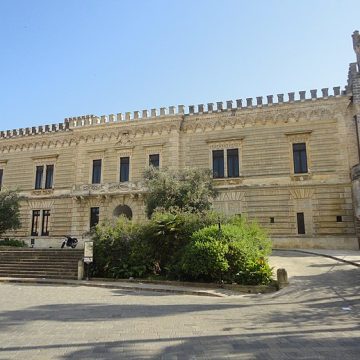
The earliest records of the castle date from the second half of the 15th century, when its construction marked the transition from Angevin to Aragonese rule, which coincided with the establishment of the Acquaviva family in the city. The structure was the work of architect Giulio Antonio Acquaviva, duke of Atri and pupil of Francesco di Giorgio Martini. The manor was completed at the corners by four massive protruding almond-shaped towers; one of which was later rebuilt by Guercio di Puglia after the Neretina revolution of 1647 that broke out in conjunction with the popular uprising in Naples led by Masaniello; certainly the whole building was on four levels in which about 49 rooms were distributed. Of admirable workmanship remain the slightly projecting cornices of the highest part of the towers, which rest on small corbelled corbels. The main facade, decorated with an ashlar motif, is also the result of 19th-century remodeling, and today characterizes the final appearance of this now noble palace that houses the Town Hall.
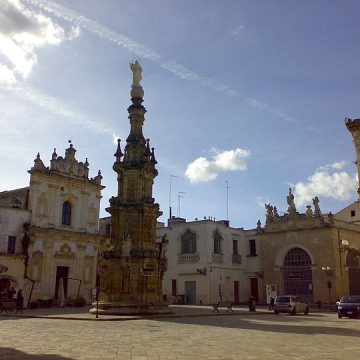
Piazza Salandra has always been the beating heart of the city of Neretina, the center of religious and administrative life since its beginnings. Originally called "Piazza delle Legne" and later known as "Piazza Municipale," it dates back to the 14th century. Connected by Via Duomo to Piazza Pio IX, close to the ancient municipal theater, the Churches of the Immaculate Conception and St. Joseph, the "agora" is made even more important by the presence of numerous monuments of some historical and architectural significance. Such are the Immaculate Conception Spire, the Sedile, The Church of St. Tryphon, the old University Palace, the Church of St. Dominic and the Bull Fountain.
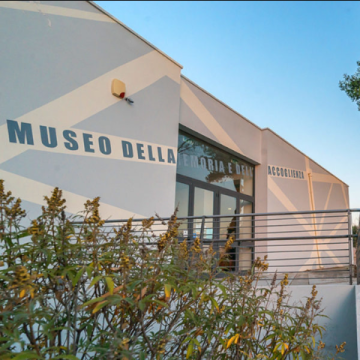
The Museum of Memory and Welcoming built to the design of Architect Luca Zevicon was inaugurated in 2009 in the presence of the Chief Rabbi of Rome and Accommodates: Photographic and video documents; A multimedia room; A library and newspaper library and three murals.
The material collected dates from 1943 to 1947, initially kept at the Nardò Historical Archives and illustrates the story of the 150,000 Jewish refugees who escaped the Holocaust and found shelter in the hamlet of Santa Maria al Bagno, which set up the Campo Santa Croce to house Jews. Nardò also is twinned with the town of Hof-Hacarmel Atilit, Israel, where some of the refugees who escaped the exterminations took refuge. The Murals were created by Romanian Jew Zivi Miller, himself a refugee and a veteran of the concentration camps. The works illustrate the suffering and pain concerning the extermination of the Jewish people through the use of the color gray, without the use of doors and windows.
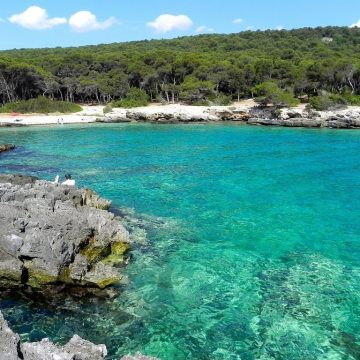
The Porto Selvaggio and Palude del Capitano regional nature park is a protected natural area in Puglia located in the province of Lecce established by Regional Law No. 6 of March 15, 2006.
In 2007 it was included by the Fondo Ambiente Italiano (FAI) in the list of "100 places to save."
The park falls entirely within the territory of the municipality of Nardò. It includes the area of the equipped regional natural park of "Porto Selvaggio - Torre Uluzzo" (established in 1980) and the Capitano marsh (classified as a natural area in 1997). The coast is rocky and indented, and characterized by pine forests and Mediterranean scrub. The Torre dell'Alto, Uluzzo Tower and Inserraglio Tower are located along the coastline. Also within the park's territory is Cavallo Cave, a natural coastal limestone cave, part of a larger system of natural caves located in Uluzzo Bay.
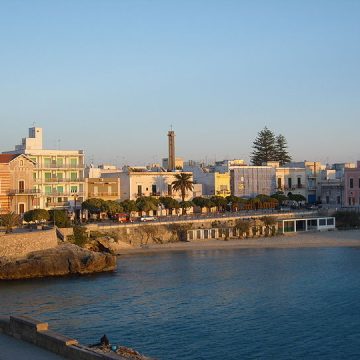
Known in the past by the names of Sancta Maria De Balneo or Sancta Maria ad Balneum the locality has been inhabited since the earliest times as evidenced by the numerous archaeological finds from prehistoric times (arrow cusps, blades, pottery shards and more) found in the nearby "Fig Cave."
For the hospitality shown, on January 27, 2005, President of the Republic Carlo Azeglio Ciampi awarded the city of Nardò, the Gold Medal of Civil Merit.
Three murals made by some of the deportees and especially by Zivi Miller still remain as evidence of that period.
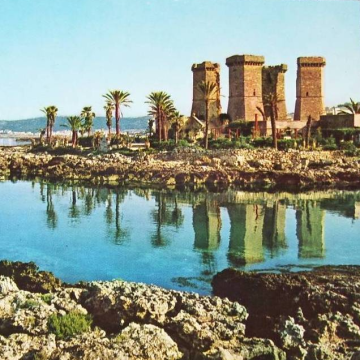
The River Tower of Galatena, better known as "Le Quattro Colonne," is one of the many coastal watchtowers in Salento built by Charles V in the 16th century to defend the territory from Saracen assaults. In the place where the tower is located there is a spring of fresh water, which was also known to the pirates who often attacked the area for supplies. Charles V therefore decided to protect this spring by having the tower erected. The tower had a truncated pyramidal structure with a square base with pentagonal corner bastions and a height of 16 meters. In the upper part was a stringcourse with corbels. The central part of the ancient tower probably collapsed not long after its construction, as a result of some enemy attack or telluric phenomena. Today only the four corner bastions remain: this is why the tower is also called "of the Four Columns."
+39 327 970 3829
Nardò (LE)
via Duomo, 22
73048
rentals@symphonyaluxury.com
+39 327 970 3829
rentals@symphonyaluxury.com
Nardò (LE) – Via Duomo, 22
Lecce (LE) – Via G. Libertini 43/A
© 2024 Copyright Symphonya Luxury Real Estate Srls